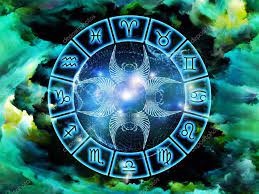What are Vedic astrology and its various aspects?

Vedic astrology is the practice that emerges in India and the east. It is well-known by the Sanskrit term Jyotiṣa. Jyoti means light, and Jyotiṣa is the holy art and science of the lights in the sky, along with the light of awareness within. This branch of astrology includes all of the diverse systems of insight taught and practised in India.
So, what are aspects of astrology?
In short, they explain the angles that planets form to each other on the wheel of the Zodiac as they move throughout the sky, and each of the angles means something diverse. Each planet in astrology has its own exclusive “personality” and governs over a diverse region of our life. The way they affect us has to do with what sign they are located in at any given time, as well as the relationships they are forming with each other. These relationships are recognized as aspects and represented by the angles planets form with each other on the zodiac wheel. There are five main aspects (trine, sextile, conjunction, opposition, and square).
Conjunction ☌
A conjunction is when two diverse planets link up together in the same sign. This hyper-focused aspect occurs when two planets are zero degrees distant, and blends the qualities of the two (or more) planets. It makes their combined energy in the specific sign they share extra intense.
If the features of the planets involved work well together and get along, it could be a great aspect, full of potential for high energy and action. But if the planets do not get along so well or bring a heavier, more challenging ambience, then being trapped in a small cosmic space together could cause some disagreement or amplify the dark feelings.
Sextile ⚹
This easy aspect is fun, occupied with good vibes, and certainly optimistic. With a sextile, the Sun is shining, the birds are chirping, and the situation at hand is happy. It is a nice break from the stress that other transits could bring and can offer us a nice chance to chill.
The only downside to the sextile aspect is that it is not the most action-oriented, so do not expect it to bring the energy for the key shift.
Trine △
Trines, formed by a 120° angle on the chart, are usually considered the best and most favourable aspect, bringing fortune, harmony, main synchronicity, and perspective for positive changes. A trine occurs while planets in the same element (fire, earth, air, and water) interact. When planets work inside the signs of the identical element, they get each other’s motives, making their energy easier to work with.
Square □
Get prepared for a little bit of cosmic drama since, just like the shape itself, a square aspect is chock-full of hard angles as well as sharp corners — so the concern is advised. Square is a strong aspect, which often dictates action. Contrary to their reputation, squares are not essentially evil. They just show that work would be involved in producing the favoured outcome.
Opposition ☍
It occurs when planets are opposite each other on the zodiac wheel (angling at 180°). When two planets are in opposing signs, an opposition occurs. It means they are found on opposite sides of the axis. In opposition, planets can discover themselves butting heads.
Difference between Vedic and Western Astrology
The most easily referred to the difference between the two lies in the technique of measurement of the Zodiac. Vedic astrology uses mainly the sidereal Zodiac (in which stars are considered to be the fixed background against which the motion of the planets is measured). At the same time, most Western astrology uses the Tropical Zodiac (the movement of the planets is measured against the location of the Sun on the spring equinox). This difference becomes only visible over time, after numerous centuries, as a result of the accuracy of the equinoxes. You can ask an astrologer for a better understanding in no time.
Astrology Houses and Their Significance
Astrology houses, also recognized as “Bhava”, are studied while predicting one’s birth chart. Each house takes up the one sign of the Zodiac Belt. These all house signs signify their implication in the horoscope. There are 12 houses explained in Vedic Astrology.
Conclusion
The conscious universe is governed by diverse stars, planets, and other divine bodies. Vedic Astrology helps us understand the association between these heavenly bodies and our physical and mental ones. They decide the destiny of the universe as a whole. Through Vedic Astrology, one could understand the influence and consequences channeled through the Sun, moon, and planets of the solar system. While astrology has no defined scientific clarification, one must open their mind to understand the concept that goes beyond the kingdom of time, space, and physics.






